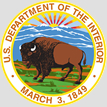










About the FWS Forensics Lab: Our Lab's History

| HISTORY | TIMELINE | ORGANIZATION | JOBS | VOLUNTEER | ARTICLES | OUR GARDEN |
 Special Agent Terry Grosz. Credit: Donna Grosz. |
OUR LAB'S HISTORY
Back in 1975, a special agent of the Division of Law Enforcement (LE), U.S. Fish and Wildlife Service (USFWS), by the name of Terry Grosz was transferred to our Washington Office and assigned to the endangered species desk... which basically meant that he was responsible for coordinating endangered species investigations nationwide.
It didn’t take long for Terry to discover that he had no easy way of getting his wildlife evidence examined, identified and compared. We didn't have a crime lab, and the FBI lab didn't work with wildlife parts and products, and museums rarely hire forensic scientists, and....well, you get the picture. So Terry did the proper agent thing, which was to start insisting that the Fish and Wildlife Service needed a crime laboratory to identify wildlife parts and products seized as evidence. Otherwise, wildlife law enforcement officers would have to try to catch the suspects either in the act of killing the animals, or in possession the entire — and thereby easily identifiable — carcass ... both of which represented difficult and dangerous situations for the investigators.
So, in 1979, thanks to Terry's persistence, the U.S. Fish and Wildlife Service (FWS) hired Ken Goddard, a police crime laboratory director from southern California (that's me, in case you were wondering who was writing this historical material), to set up a forensics program for wildlife law enforcement, and to write the crime scene investigation, evidence handling and forensic portions of our Law Enforcement Manual.
 Forensics Lab Chief Ken Goddard in Alaska, investigating an outlaw motorcycle gang leader suspected of illegally dealing in walrus ivory. Credit: USFWS. |
I moved to Washington DC in April of 1979, set up an office in a far corner of our Washington headquarters, contacted several of the Federal Law Enforcement agencies to get copies of their evidence handling systems, blinked in shock when I realized how complex these systems were, and then quickly set to work to draft a much simpler set of protocols. Six months later, I handed the draft protocols and manual chapters in to my boss, the Chief of Law Enforcement, and said something to the effect of “okay, let’s start building the lab.”
That was when I learned, to my amazement, that 1) LE didn’t have any funding to construct a crime laboratory; and 2) it was my job to get that funding via the FWS budget process (side note: it’s illegal for federal government employees at my level to lobby members of Congress). It became immediately obvious that I was facing a serious “learning curve.”
The next six years turned out to be interesting. I spent most of that time drawing up lab plans, writing proposals, and arguing with FWS bureaucrats; but I also spent a lot of time out in the field providing CSI and other technical assistance to the agents working major investigations. Little by little, I was learning what the agents in the field needed … and, more importantly, how to work the bureaucratic system.
Finally, in 1985, thanks to Terry and some help from a fellow named Amos Eno (at that time, the Executive Director of the Fish and Wildlife Foundation), a bunch of other influential people too numerous to name, and — ultimately — a chiropractor from Eagle Point, Oregon, named Dr. Ralph Wehinger (who listened to a lecture by one of our Agents on illicit falconry in Portland, Oregon, and then proceeded to get Oregon Senators Hatfield and Packwood interested in our need for a crime lab facility), the following events began to occur... Read more about the Lab's development in our Timeline.
 |
Last Updated:
February 13, 2008
U.S. Fish and Wildlife Service Home Page | Department of the Interior | USA.gov | About the U.S. Fish and Wildlife Service | Accessibility | Privacy | Notices | Disclaimer | FOIA |
 |